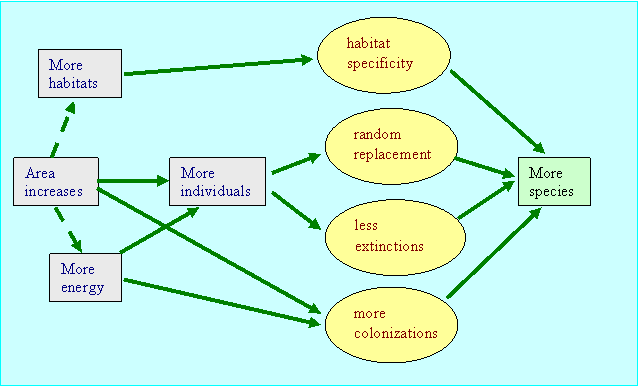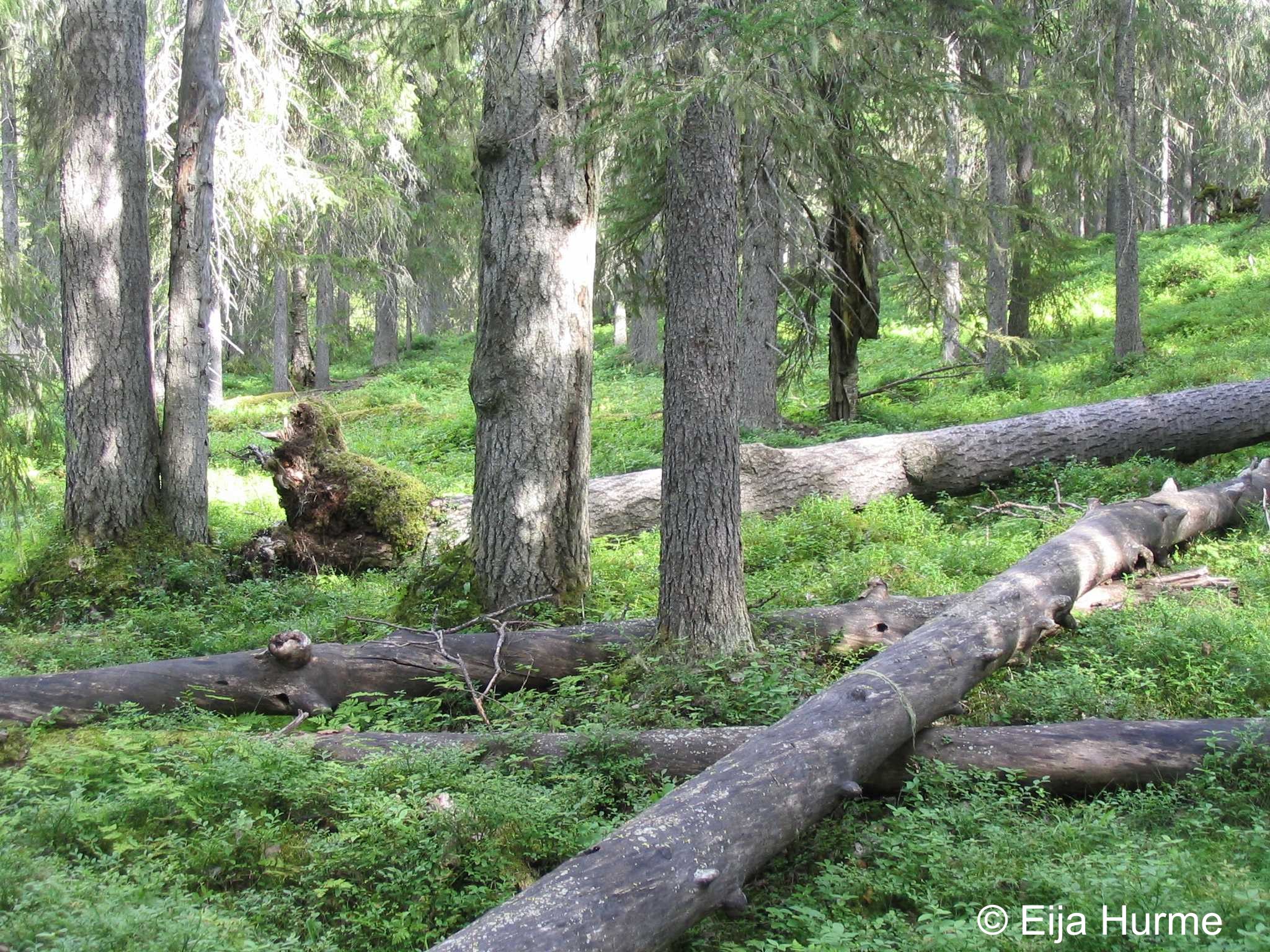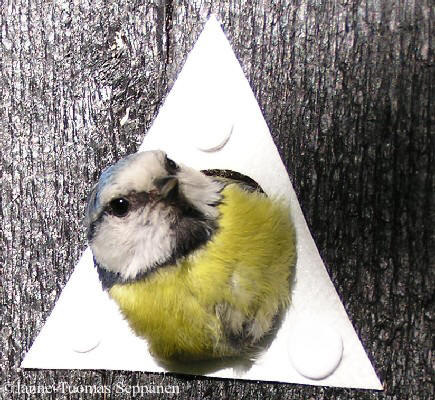![]() Research - Mikko Mönkkönen
Research - Mikko Mönkkönen
Main research interests
My main research interests include community ecology, conservation and management of boreal biodiversity forest. Major focus is also on cost-efficiency of conservation practices (i.e. ecological economics). Because of my background in bird community and behavioural ecology my second focus is on species interactions, and on the role of information in animal habitat selection. These studies also have applied aspects in conservation and management of animal populations and communities.
Current projects
Predictions and tests of area-based hypotheses of species diversity: basic and applied implications
Ecological and economic efficiency of integrated management of biodiversity in boreal forests
Information use in animal communities
Incorporating ecological knowledge to landscape level forestry planning
Predictions and test of area-based hypotheses of species diversity: basic and applied implications
Merja Honkanen (PhD Student), Mikko Mönkkönen & Jean-Michel Roberg (Post-doc researcher)
A primary goal in ecology is to understand why species richness varies in time and space. One of the few general ecological laws is that species richness is a positive function of area. This species-area relationship has been the focus of many analytic and descriptive investigations lately but our understanding of the mechanisms producing the relationship is still limited, and predictive power remains elusive. Species-area-relationship is commonly used to make predictions about species loss in the context of habitat loss and fragmentation, and therefore more comprehensive knowledge on the mechanisms would also be of great practical importance for conservation planning.
Alternative pathways from area to species richness include direct and indirect mechanisms. First, with increasing area more individuals can fit in. This may then translate into higher species richness because a larger number of species can obtain a population size exceeding some minimum viable size, or simply because of an increased probability for the different species to be represented by at least one individual on the site through random sampling effects. An alternative explanation for variation in species richness with area is the species-energy theory, which asserts that area is merely a proxy for energy, and the primary reason why species richness increases with area is the fact that larger areas contain more energy. The species-area relationship, therefore, would just be a case of more general species-energy relationship. Third, increasing area per se may lead to higher colonization rate (target area effect) and hence larger species richness. Fourth, the habitat diversity hypothesis proposes that because different habitats are distributed heterogeneously in space, larger areas contain more habitats. As species differ in their habitat requirements, larger areas should foster more species. In this project, the first goal is to address the alternative hypotheses for the species-area relationship by deducing critical predictions and testing them using a comprehensive collection of data on forest birds and dead-wood associated fungi.

Understanding species richness patterns alone is not sufficient, however. Species identities and the composition of local communities also of interest for ecology and conservation. From an applied perspective, it would be useful to be able to predict the species that are more likely than others to go extinct and identify the communities (or habitat types) that are becoming less diverse. Therefore, the second goal is to measure among-site variation in species composition (beta-diversity) and to analyse species composition in sites varying in area, productivity and habitat diversity. These analyses will reveal to what extent community composition is predictable.
Main collaborator: Folmer Bokma (Univ. Umeå), Bege Jonsson (Mid-Sweden University), Janne Kotiaho (U Jyväskylä), Juha Siitonen (Metla)
Funding: Academy of Finland (proj# 7115560) 2007-2010.
Ecological and economic efficiency of integrated management of biodiversity in boreal forests
Anne Laita (PhD Student), Mikko Mönkkönen & Jonna Timonen (PhD Student)

Sustainable forest management (SFM) is the core approach for a long term flow of societalvalues from forests. SFM aims to protect ecosystem integrity while considering the socio-economic values that forests provide. This calls for a balance between the needs of the forest industry to obtain raw material that is of reasonable price and other values associated with forest habitats like, hydrological functions, recreation, tourism and biodiversity protection.
Present forested landscapes in Europe are a mixture of managed and protected forests. Traditionally protected areas have been considered more or less in isolation to managed forests. However, these two land use types are in practice intermingled in almost all forest landscapes, and the ability of a landscape to maintain biodiversity critically depends on both. Any management action in commercial forests affects the landscape where protected areas are embedded, and vice versa. Therefore, an integrated approach is needed to sustain the forest biodiversity.
In this project, we focus on the efficiency of the so-called woodland key habitats (WKH) together with other conservation measures in maintaining biodiversity in managed landscapes. WKHs are typically rather small patches of forest, in Finland less than 1 ha, but rich in biodiversity. We review the scientific evidence of the ability of WKHs to maintain biodiversity in managed forests, and also evaluate their costs and benefits. The evaluation involves new experimental and empirical field studies on animals and plants. We also address how WKHs supplement larger set-asides (protected areas) and what kind of networks they comprise in the landscapes.
Future forest landscapes will likely remain composed of different land-use types including intensively managed commercial forests, forests under limited management (buffer zones, woodland key habitats) and strictly protected forests. It is very likely that biodiversity can best – from ecological, economic and social perspectives – be maintained by developing integrated management options for total landscapes. However, we do not know what is the the most cost-efficient and sustainable combination of these land-use types. In this project we use landscape level simulation approaches (SELES) to evaluate alternative combinations of protected areas, WKHs and commercial forests in varying landscape contexts. The ultimate goal is to achieve alternative sustainable scenarios for boreal forest landscape management.
Other Researchers: PhD. Pasi Reunanen, PhD Olli-Pekka Tikkanen
Main collaborators: Prof. Lena Gustafsson (SLU, Uppsala), Dr. Artti Juutinen (U Oulu), Dr. Janne Kotiaho (U Jyväskylä), Prof. Jari Kouki (U Joensuu), M.Sc. Juha Siitonen (Metla), Dr. Anna-Liisa Ylisirniö (U Lapland)
Funding: Ministry of Environment (Environmental Cluster) 2007-2008
Information use in animal communities

Organisms continuously face a situation where a decision has to be made with imperfect information, and thus with uncertainty about the consequences of that decision. Fortunately, fellow beings are usually faced with at least a similar conundrum, and the decisions made by – and repercussions for – these individuals can be used as information to aid in one’s own decision-making process. This phenomenon, generally termed social information use, has attracted tremendous research interest in recent years. We are particularly interested in information provided by individuals belonging to different species, e.g. putative competitors and predators. How do animals collect and use information e.g. on predation risk and on relative quality of patches when selecting habitats? We specifically address the role of public information transfer among bird species, how this results in heterospecific attraction and in avoiding risky nesting sites and habitats. From a community perspective we study the role of socially transferred information and traditions as the third key process – together with the flow of genetic information and energy – in evolutionary biology.
Main collaborators: Dr. Jukka Forsman (U. Oulu) and Dr. Janne-Tuomas Seppänen
Incorporating ecological knowledge to landscape level forestry planning
Eija Hurme (PhD Student, Univ. Oulu) & Mikko Mönkkönen
One explicit goal of landscape level forestry planning is to maintain biodiversity in the area under commercial use. This requires incorporating ecological knowledge to forestry planning practices. Knowledge basis for doing this has increased much during the past few years. In practice it would be very useful if one could identify species or species groups whose persistence in a landscape would indicate biodiversity more generally.
In this project we first develop methods to combine ecological knowledge with economic goals for sustainable forestry. This goal will be achieved by building statistical models for a number of bird and one mammal species, based on extensive field data that we have collected, to predict their probability of presence or abundance in a site. This value can then be put into a dynamic modelling procedure (MONSU-programme). The modeling will reveal alternative forestry plans for an area for a period of decades, which maximizes population persistence of all species simultaneously with given economic and spatial constraints.
Our second goal is to reveal if the Siberian flying squirrel, an endangered old forest species in N Finland, could act as an umbrella organism guiding landscape level planning. Our earlier work has shown that occurrence of the flying squirrel in a forest stand can fairly reliably be  predicted with remote sensing data (satellite images, aerial photographs), and therefore its status as umbrella species would be very effective. This goal will be achieved by studying the occurrence of a selected set of endangered or rare moss, lichen, bracket fungi and insect species in sites known to be occupied and not occupied by the flying squirrel.
predicted with remote sensing data (satellite images, aerial photographs), and therefore its status as umbrella species would be very effective. This goal will be achieved by studying the occurrence of a selected set of endangered or rare moss, lichen, bracket fungi and insect species in sites known to be occupied and not occupied by the flying squirrel.
Main collaborators: Dr. Mikko Kurttila (Univ. Joensuu), Dr. Anna-Liisa Ylisirniö (Univ. Lapland)
Main results (E. Hurme's PhD thesis): http://herkules.oulu.fi/isbn9789514289392/
Bird populations in fragmented forests: local processes and global patterns
Petri Lampila (PhD Student, Univ. Oulu) & Mikko Mönkkönen
Habitat loss and fragmentationare considered main reasons in the recent loss of global biodiversity. Fragmentation can exacerbate the effects of pure habitat loss potentially producing an population decline greater than expected solely on the basis of remaining area, which may result in population extinction even if suitable habitat still exists. Population decline is triggered by changes in demographic vital rates such as nesting success or survival. Proper understanding of the mechanisms involved in demographic changes in populations as a consequence of habitat fragmentation is crucial because only then we can start taking steps to remedy negative fragmentation effects effectively. In this project we aim at revealing, at the global scale, life history features that predispose bird species to negative effects of habitat fragmentation. At more local scale we study fragmentation effects on forest bird populations in severely fragmented NE Finnish forest landscapes and in adjacent areas in Russian Karelia with far more continuous landscape structure.
Main collaborators: Dr. Pekka Helle (FGFRI) and prof. Esa Ranta (Univ. Helsinki)